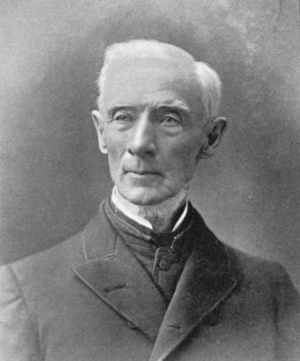Richard Owen (geologist) facts for kids
Quick facts for kids
Richard Dale Owen
|
|
|---|---|
 |
|
| Born | January 6, 1810 Lanarkshire, Scotland
|
| Died | March 25, 1890 (aged 80) New Harmony, Indiana, U.S.
|
| Cause of death | accidental poisoning |
| Resting place | Maple Hill Cemetery (New Harmony, Indiana) |
| Monuments | Colonel Richard Owen (bust) at the Indiana Statehouse, Indianapolis |
| Occupation | U.S. military officer, geologist, and educator |
| Employer | Indiana University; Purdue University |
| Spouse(s) |
|
| Children | 2 |
| Parent(s) |
|
| Relatives |
|
| 1st President, Purdue University | |
| In office August 13, 1872 – March 1, 1874 |
|
| Preceded by | Office Created |
| Succeeded by | Abram C. Shortridge |
Richard Dale Owen (born January 6, 1810 – died March 25, 1890) was a smart and important person from Scotland. He became a geologist, a scientist who studies Earth, an educator, and a military officer in the United States. He moved to the U.S. in 1828 and lived in New Harmony, Indiana.
Richard Owen was trained as a scientist and a doctor. He served as an officer in the U.S. Army. He fought in two big wars: the Mexican–American War and the American Civil War. After the Civil War, he taught at Indiana University for fifteen years. He even led the natural science department there.
While still teaching at Indiana University, Owen also became the very first president of Purdue University from 1872 to 1874. Before the Civil War, he taught science at military schools in Kentucky and Tennessee. He also helped his brother, David Dale Owen, with early studies of rocks and land in the Northwest Territory. In 1860, Richard Owen took over from his brother to become Indiana's second state geologist. He was very interested in studying geology, weather, Earth's magnetic field, and earthquakes. He wrote many scientific books, including surveys of several U.S. states.
Contents
Richard Owen's Military Service
Richard Owen was a brave soldier and leader. He served as a colonel in the Union army during the American Civil War. His group was called the 60th Indiana Infantry Regiment.
Leading Camp Morton
One of his most famous roles was commanding Camp Morton. This was a prisoner-of-war camp in Indianapolis, Indiana. About 4,000 Confederate soldiers were held there. Owen was in charge from February to May 1862. He became well-known for treating the prisoners with kindness and respect.
Returning to Duty
After his time at Camp Morton, Owen went back to active fighting in June 1862. He was captured by the Confederate army but was later released. He decided to leave the military in December 1863.
Honoring His Legacy
In 1913, a bronze statue of his head, called a bust, was placed at the Indiana Statehouse in Indianapolis. This was to honor his great leadership at Camp Morton during the war. Today, buildings at Indiana University in Bloomington and Purdue University in West Lafayette are named after him.
Images for kids
-
One of Owen's sketches of columnar basalt on Lake Superior



